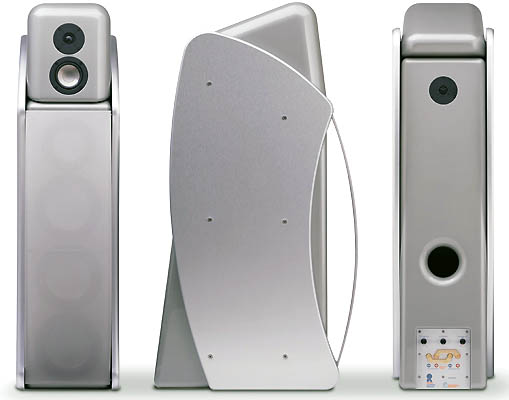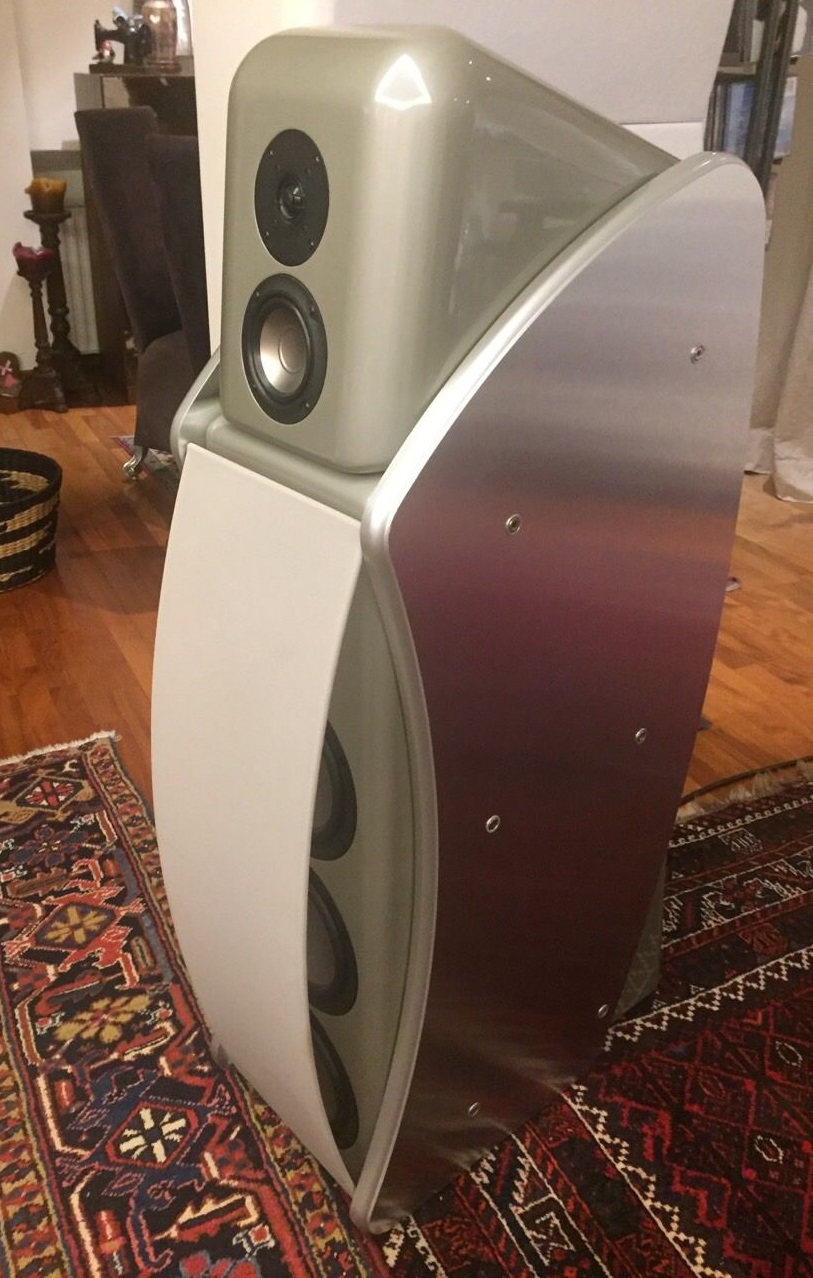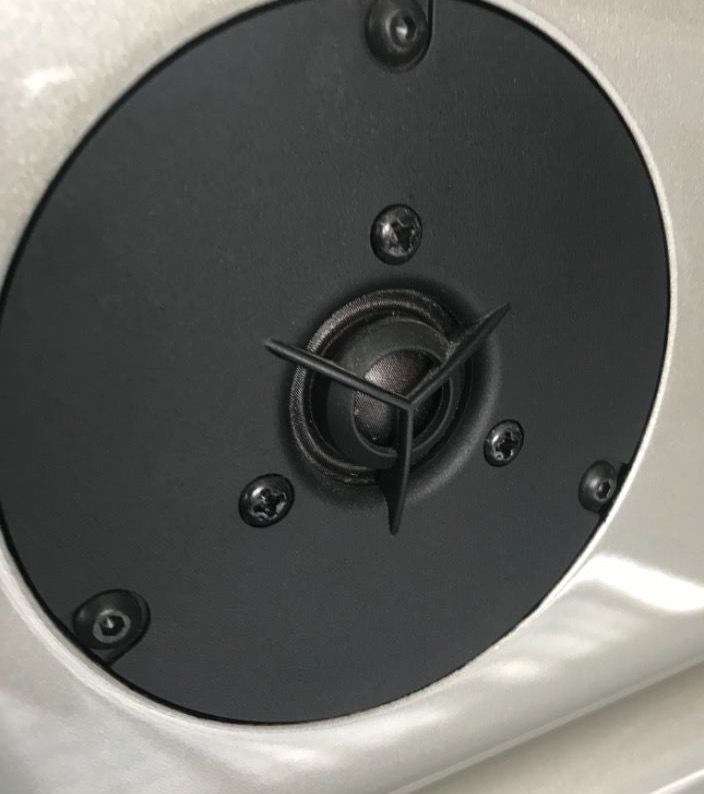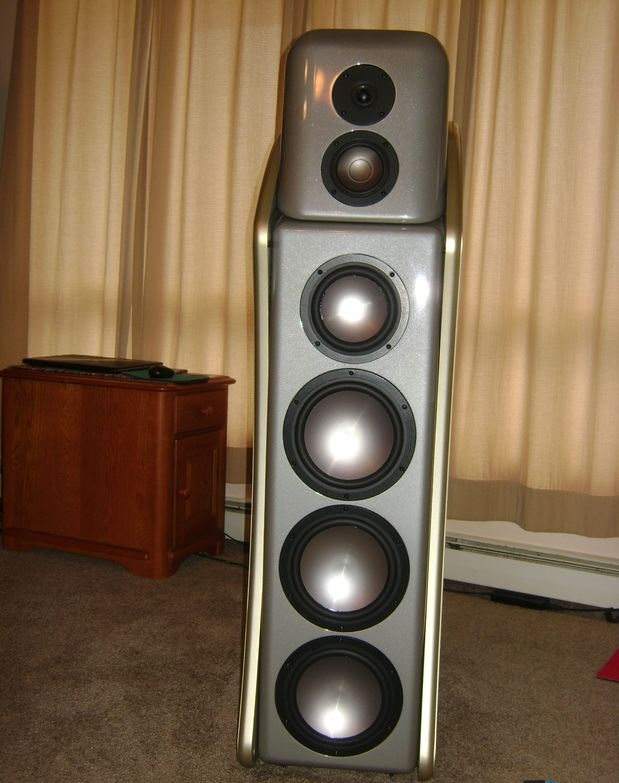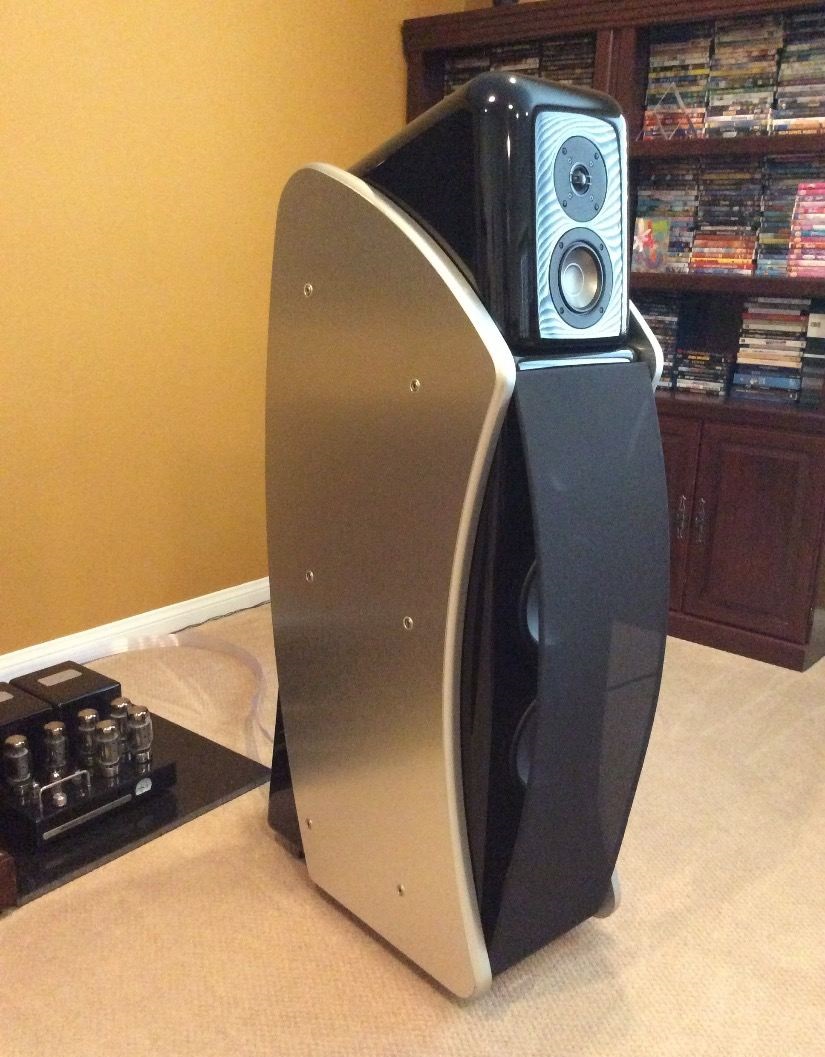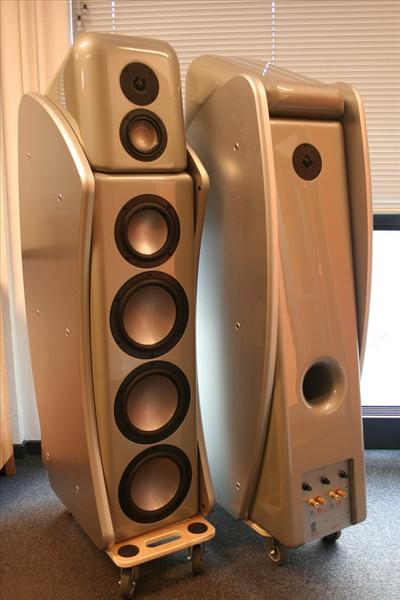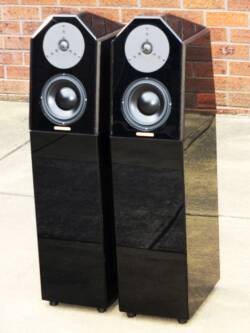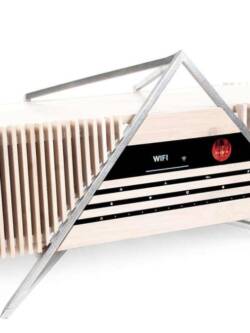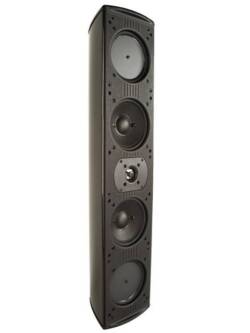Revel Ultima Salon 1 Speakers
Original price was: R220,000.00.R69,000.00Current price is: R69,000.00.
On a very special Saturday night in early September—late winter in Australia—I was deeply moved by hearing Brahms’ Symphony 1 in the concert hall of the Sydney Opera House complex. Perhaps it was Marek Janowski’s fiery, inspired conducting, but I keep recalling the hall itself. Earlier that day, I had photographed—first from my hotel room, later from a ferry—the huge, nesting sail-like roofs, covered with a million white ceramic tiles, that enclose an opera theater, concert hall, and restaurant. Twenty-five years in construction and costing over $107 million, the Sydney Opera House is described in my Fodor’s ’98 Australia guide as “the most widely recognized landmark of urban Australia.” Attending the concert that night—all 2679 seats were occupied—I found the acoustics lovely, dark, and rich.
 Which brings me to the Revel Salon loudspeaker. Before I ever heard this large, floorstanding dynamic loudspeaker, its appearance caught my attention. Like the huge concrete sails covering the Sydney Opera House, the Salon’s curved rosewood side panels and bowed grille screen are gracefully pleasing to the eye. Both concert hall and loudspeaker please several senses at once.
Which brings me to the Revel Salon loudspeaker. Before I ever heard this large, floorstanding dynamic loudspeaker, its appearance caught my attention. Like the huge concrete sails covering the Sydney Opera House, the Salon’s curved rosewood side panels and bowed grille screen are gracefully pleasing to the eye. Both concert hall and loudspeaker please several senses at once.
Description
The Revel Salon is a four-way system with seven drive-units: two tweeters (1.1″ on the front and 0.75″ on the back), one 4″ midrange, one 6.5″ midbass, and three 8″ woofers. These are set into a two-part cabinet more than a foot wide, more than two feet deep, and over four feet tall. The bottom section houses the midbass unit and the three woofers with their mica- and carbon-filled copolymer domes, all hidden behind the flying front grille. The woofers are reflex-aligned with a port tunnel 16″ long and 4″ wide, which flares to a 6″-diameter opening on the Salon’s rear panel, just below the rear tweeter. Kevin Voecks, the Salon’s designer, claims this multiple driver system better handles large dynamic bass peaks, dissipating heat buildup before it can cause compression. The large, flaring port was designed to not make “chuffing” sounds when the Salon is driven at high levels.
Besides the reflex port and second tweeter, the rear panel features four gold-plated speaker terminals for biwiring, a low-frequency compensation control that gives ±2dB adjustment at 43.9Hz, and separate level controls for the front and rear tweeters.
The upper section houses the tweeters and the midrange unit, and protrudes above the side panels and cants backward, placing the tweeter 48″ above the floor. The front tweeter, a 1.1″ aluminum-alloy metal dome, replaces the Salon prototype’s soft-dome fabric tweeter, now used in Revel’s Ultima Gem loudspeaker. The combination of aluminum voice-coil, the optimized magnet structure, the specially formulated anodizing of the 28mm aluminum dome, the damping plug, the inductance and flux-modulation rings, and the stray-flux cancellation magnets are said to allow this transducer to operate in a pistonic manner out to 30kHz, its dome’s first breakup mode. The tweeter’s off-axis response is optimized by the top enclosure’s smoothly curved baffle.
Not being able to find a suitable OEM midrange driver, Revel designed and manufactured for the Salon its own 4″ (102mm) concave titanium-diaphragm transducer. It employs an unusually large (1.5″, or 38mm) voice-coil, optimized high-flux neodymium motor, and co-injected fluoroelastimer rubber surround, with a Faraday ring on the pole-piece to reduce magnetic distortion. This large motor structure allows the midrange to play at high levels without suffering from heat buildup and the resulting compression.
The crossover uses fourth-order slopes, the drivers operated in their optimal range to yield the flattest off-axis and first-reflection responses. Each major section—tweeter, midrange, midbass, woofers—has its own crossover board populated with high-quality individual components. The crossover elements of each Salon are individually trimmed and matched to within 0.5dB of a design reference.
The Salon’s fit’n’finish are the best I’ve come across. The rosewood side panels on my review samples had a luster and sheen that far exceed those of the fine furniture cabinets I have in my living room. The quality of the samples’ Gray Heather high-gloss paint matched or surpassed finishes on loudspeakers costing two to three times as much. Hardware and connections are sturdy, gold-plated, easily accessible, and look like they’ll last a lifetime.

Setup
I placed the Revel Salons where my Quad ESL-63s had done best: 63″ from the rear wall and 36″ from the side walls, on a circular area rug. The Salons faced the full length of my listening room, which is 26′ long, 13′ wide, and 12′ high, with a semi-cathedral ceiling. The back of the room opens into a 25′ by 15′ kitchen through an 8′ by 4′ doorway. Even in this large listening area—over 5000 cubic feet—the Salon produced high volumes. Its 86dB/2.83V/m voltage sensitivity falls within the range this magazine has found to be normal. Medium-powered solid-state amplifiers such as my 100Wpc Mark Levinson No.331 were able to generate loud levels with little evidence of clipping. Even so, I chose the high-powered Bryston 7B-ST monoblocks (954W each into 4ohms) for most of my listening, for their power reserves and easily visible front-panel clipping indicators.
Final adjustments included comparative nearfield (8′) and farfield (16′) listening, low-frequency signal-generator sweeps, phase checks, pink-noise auditions, and optimization of listening-chair placement for optimal soundstaging and imaging.
The Salons had solid output down to 19Hz in my listening room, with no doubling (the production of second-harmonic distortion). Playing Stereophile‘s Test CD 3 for channel checks and phasing, I moved my chair around until I could hear the in-phase pink-noise signal as a holographic patch about 6″ in diameter suspended about 4′ above the floor. Imaging and soundstaging were optimized when the speakers and my chair formed the apices of an equilateral triangle 8′ on a side (measured from the tweeter centers). The Salons’ tonal balance did not change when I played pink noise and conducted the “sit down, stand up, walk around” test.
Using both pink noise and J. Gordon Holt’s voice on Stereophile‘s first Test CD (STPH002-2), I tried adjusting the Salon’s three rear-panel system-optimization knobs. Turning off the rear tweeter caused JGH’s voice to harden. Front-tweeter boost or cut adjustments were subtle, but I preferred the “0dB” position. As for the bass adjustments around 50Hz, the “-” position kept JGH from sounding too “chesty.” As a result, I left the rear tweeter on, the front tweeter set at default (“0”), and the low-frequency compensation knob set at “-“.
Sound
The Revel Salon’s most striking sonic characteristics were its bass response—deep, powerful, solid, and tonally accurate—and resolution of detail. With each selection I played, I heard more inner detail, felt more power, and seemed to connect faster to the music. David Hudson’s raw, pulsing, raspy bass didgeridoo on “Rainforest Wonder” from Didgeridoo Spirit (Indigenous Australia IA2003 D); the solid tonal underpinnings of the powerful pipe-organ pedal notes on Elgar’s Dream of Gerontius (Test CD 2, Stereophile STPH004-2); the massively percussive, sledgehammerlike thudding bass in “Assault on Ryan’s House” from James Horner’s Patriot Games soundtrack (RCA 66051-2)—no matter the recording, the Salon’s superb bass response swept me into the music in new and exciting ways. Those three woofers had the power, range, and pitch definition I’ve heard only in the best powered subwoofers. From the deepest bass up through the midrange, bass notes betwee! n 25 and 50Hz had a seamlessness—a sonic evenness—that I hadn’t heard before. Even though there was no apparent bass prominence, I found it easier than ever before to follow bass lines.
But music is more than bass. Did the Salon meet its design goals of timbral accuracy, low distortion, and lack of dynamic compression?
The Salon’s timbral abilities were topnotch, as heard on “For Turiya,” from Alice Coltrane and Charlie Haden’s Closeness (LP, Horizon/A&M SP-710). The Salon projected a solid, three-dimensional image of Haden’s closed-miked acoustic bass, but also brought out—for the first time—a dark sonority in the interaction between plucked strings and fingerboard.
This timbral accuracy allowed me to resolve musical textures in a way I hadn’t been able to before. I turned back, time after time, to music I thought I knew, only to hear more information about the reediness of wind instruments, the subtle qualities of the human voice in choirs, the inner sounds of drumheads and soundboards. For the first time, I noticed additional resonances in the male chorus singing “Lord Make Me an Instrument of Your Peace,” from Requiem (Reference Recordings RR-57). The bass clarinet soloist’s sound on H. Owen Reed’s La Fiesta Méxicana on Fiesta (Reference RR-38CD) was unusually lovely, sweet, and captivating.

SONY DSC
The Salon was less prone to distortion and dynamic compression than the previous Voecks design I had heard in my listening room, the Snell Type A Reference. This was evident while playing deep-bass transients at high volumes. The Liberty Fanfare from Winds of War and Peace (Wilson Audio WCD-8823) includes a close-miked bass drum. The Salon’s woofers played this fortissimo drumstroke as a sudden, well-defined thud with a cleanly defined leading edge. There were no lingering overtones, no overhang, and no disturbance of the midrange or treble sounds. Strangely enough, the usual subwoofer pyrotechnics—shaking floors, rattling baseboards—were absent, although the note had more heft, solidity, and slam than heard before. Nor did the Salon’s woofers evince compression during sustained bass notes, as was shown by the “First Haunting/The Swordfight” from the Casper soundtrack (MCA MCAD-11240). The Salon played the synthesizer and bass-drum cresce! ndos so well that I advanced the volume until the Bryston 7B-STs’ clipping lights flashed—but the Salon remained clean, refusing to choke.
This lack of compression and low distortion were most evident when rendering the full dynamics of percussion, as on Tito Puente’s timbales solo, “Tito,” on Arturo Sandoval’s Hothouse (N2K 10023). Played at the Bryston 7B-STs’ maximum output, the Salon projected an image of the timbales spread across the soundstage in three parts. Precise soundstage imaging—even at top volume—showed Puente moving back and forth among the three drums. Each drumstick stroke was sudden, with no decay or congestion—just the clear, open, explosive sounds of the drumhead, the rim, and the drumstick’s wood. The Salon captured all the transients, from trumpet blasts to rimshots, with no sign of compression. At levels I’ve never been able to get from any other loudspeaker, the sound of the Salons in my room was tremendous—clean, fast, loud, dynamic.
I was on a roll. Reaching further back in my vinyl collection, I pulled out the Sheffield Drum Record (Sheffield Lab Direct Disc Recording 14). Its liner notes indicate that this “record is clean and uncompressed in its instantaneous peak crests.” I increased the gain until the Bryston 7B-STs’ clipping lights flashed on peaks—definitely kilowatt territory! The playback level increased but remained very, very clean. The Salon displayed complete control, falling silent after each drumstroke or rimshot. Cymbal notes were startlingly clear, utterly transparent, and sweet. The kick/bass-drum strokes had great solidity and heft. Cymbal strokes moved with great precision from right to left, a spatial precision I’d heard only with the original Quad electrostatic loudspeakers, but at much lower maximum levels.
Before finishing this review, I listened to Marek Janowski conducting Brahms’ Symphony 1 (CD, ASV Quicksilver QS 6101)—the same conductor and music I’d heard in Australia. As the first movement began, the Salon resolved the ominous, pounding timpani and the violins and woodwinds playing opposing scales. The intricate mix of the timpani ostinato and the ascending violin line—so clear when heard live—was rendered with its full complexity and power. Leaning back in my chair, I was swept into the music, drawn back to that early September evening in Sydney.

Conclusion
The Revel Salon’s $15,500/pair list price—for the version featuring a high-gloss finish and rosewood side panels—is not unreasonable considering its groundbreaking design and its superb integration of the entire audio spectrum. For that reason, I don’t judge the Salon’s value only by its cost, any more than I would defend Yo-Yo Ma’s choice of his 1712 Davidoff Stradivari cello on the basis of price alone. Vintage musical instruments are in a class by themselves, as are outstanding loudspeakers. To quote Wes Phillips, “If you can resist them, you have far more self-control than I pretend to.” All told, I’ll be very sad to hand the Revel speakers back to the truck driver.
I had to travel to Australia to comprehend how the structural grandeur of the Sydney Opera House’s graceful sails and the rich sonics of its concert hall could work together to create a unique aesthetic experience. Similarly, the Revel Salon’s fit’n’finish must be seen, and its timbral accuracy heard, to fully appreciate its unique use of good engineering principles and superb industrial design.
Description
Description:
Four-way, floor-standing loudspeaker with rear-facing reflex port and tweeter.
Drive-units:
1.1 “(28mm) aluminum-alloy dome tweeter,
0.75” rear tweeter,
4 “(102mm) titanium-dome midrange driver,
6.5” (185mm) midbass transducer,
3 x 8 “(210mm) woofers.
Crossover frequencies : 125Hz, 450Hz, 2.2kHz; 8kHz for rear tweeter.
Rear-panel level controls: front and rear tweeters, low-frequency compensation.
Frequency response: 25Hz-20kHz, ± 0.75dB
Nominal impedance: 6 ohms, 3 ohms
Minimum.Sensitivity : 86dB / W / m.
Dimensions: 1330 x 343 x 675 mm
Weight: 108.9 kg each.

